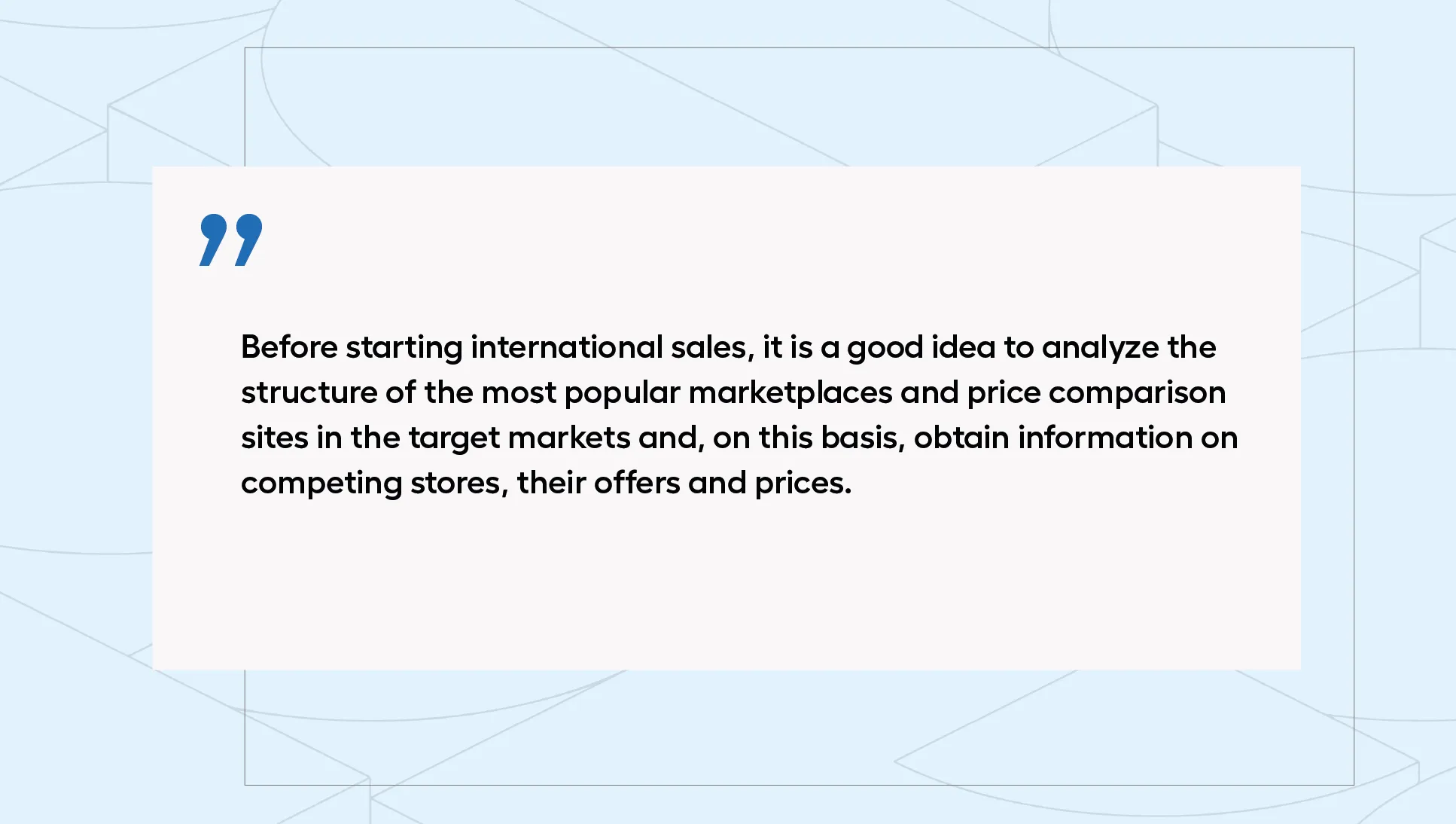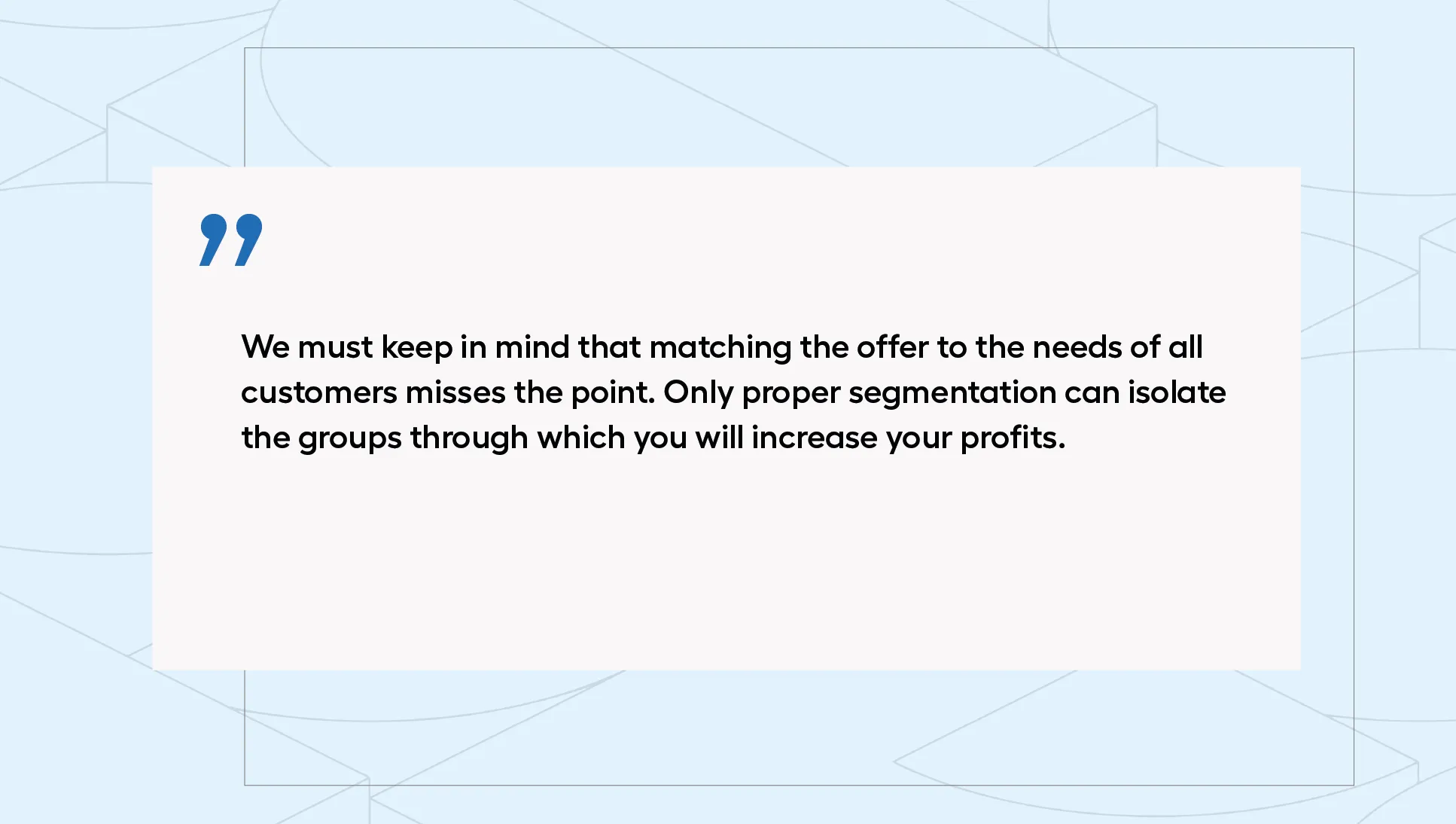The latest analysis by CBC Europe shows that cross border commerce is not just a temporary trend. Already in 2021, foreign sales on the Old Continent generated profits of more than 230 billion euros, with a growth rate of 18% per year. Leading out into new markets is therefore an excellent opportunity to develop your eCommerce and secure a stable position in the industry in the future. But where should you start your overseas expansion? In which country should you start selling first? How to prepare for cultural differences in foreign countries? We are well aware that a debut abroad can raise many questions and doubts. That is why we are starting a series of interviews with eCommerce industry professionals and experts. Each of them will share their own experience in a different market area, revealing all the secrets of cross border commerce.
We will first look at competition analysis, answering the basic question - how can you find your place abroad? Aleksandra Hołownia from Dealavo told us about the structure of foreign markets and the needs of customers there.
Ready to explore new horizons? Enjoy the read!
Rafał Gadomski: Choosing a foreign market is the first step on the road to international expansion of your own eCommerce. What should you look for to make an well-informed decision?
Aleksandra Hołownia: The decision to choose a foreign market is a complex process. First of all, before starting to sell outside the country, it is worthwhile to analyze the structure of the most popular marketplaces and price comparison services (e.g. Idealo or Google Shopping) in the target markets and, on this basis, obtain information on competing stores, their offers and prices. It will then become possible to identify key product categories and isolate the so-called bestsellers, i.e. the best-selling items in a given location. This knowledge will allow you to better understand the trends and consumer preferences there.

RG: The above activities revolve around understanding market performance and local eCommerce stores. What other elements should be included in a competitive analysis abroad to effectively assess the chances of success of your own eCommerce ?
AH: When starting to sell abroad, we need to be aware that for consumers there, our store will be a new and unrecognizable brand. For this reason, it is worth considering how to encourage customers to buy. Increasingly, entrepreneurs are focusing on supporting values that are relevant to consumers (e.g. green practices). Attractive prices can also entice them to place an order - an advantage in this area will help distinguish our business from the competition and increase user traffic from price comparison sites to the e-store website.
Such price level analysis can be performed independently or with the use of dedicated monitoring and automation tools. The latter solution saves a lot of time and ensures that the accepted rates will always correspond to the current market situation. Using tools such as Dealavo, eCommerce owners are also able to streamline the process of identifying competitors.

RG: The key to successful eCommerce, then, is to tailor the shopping process to the needs and habits of customers in a given market. How do you find out if elements such as UX, payment or logistics options are in line with their preferences?
AH: Undoubtedly, every market is governed by its own laws - and it is no different when it comes to the purchasing process. In order to get a better understanding of customer habits, it would be a good idea to start by analyzing the results of research on your target audience. The first place to start is by looking at how often consumers choose to shop online in a given country. In most of Europe, eCommerce is now standard, but for specific industries, customers may not be used to this form (such as groceries in most European countries or the furniture market in Italy).
The data studied may also vary depending on other factors such as age structure. In addition, not all markets are open to foreign sellers to the same degree. For example, the French and the British prefer to shop at home stores. In contrast, more than half of Austrians and Swiss like to buy German products.
Another important element is payment and delivery preferences. In Poland, almost every store offers BLIK payment options, while in Germany paying by bank transfer is still popular. To see which options are most in demand in a selected country, it is worth analyzing the most important results of reports and statistical data (e.g. Eurostat), as well as studying the offerings of the largest stores in a given region.
Each of the above areas (target audience, age structure, preferences, payment and delivery methods) helps determine how much potential demand there is in the selected country. Even the most basic factors can prove crucial in assessing customer preferences in a given market.
RG: Understanding customer needs and preferences influences better tailored offerings - how do you match content and buying processes with the target consumers?
AH: We must keep in mind that tailoring your offer to the needs of all customers misses the point. It is only through proper segmentation that you can isolate the groups through which you will increase your profits. This will be helped by specifying exactly who belongs to your audience in your home market. To do this, it is useful to know the age, gender, interests and average income of your target consumers. Comparing these criteria with your target overseas audience will indicate to whom it is best to target your offer. It may turn out, for example, that due to the worsening economic situation and rising unemployment in Spain, young residents there will be less eager to buy than young Poles.

Tools such as Google Analytics or Facebook Ads will help in determining segments in the international markets. In the first place, you can use them only to verify the effectiveness of your audience groups (even before launching paid campaigns) and, on this basis, verify various forms of targeting for a better understanding of the preferences of foreign customers.
RG: Are there any cultural differences that we need to consider when entering a foreign market?
AH: When debuting in a new market, sellers often do not pay attention to cultural aspects - this is a big mistake. Of course, a lot depends on how culturally distant the country you want to enter with your offer is, but in any case there will be even minor differences.
Conducting eCommerce will require a different approach both for Central and Eastern European countries (including Slavic countries), the DACH market (Germany, Austria and Switzerland), and when deciding to enter Asian markets. In finding your way into a new culture in each case, it will help to work out your marketing calendar and see what holidays and occasions can be used in the country to boost sales. While in Poland November 11 is Independence Day, China celebrates Singles' Day, the biggest shopping day in the world.
From a cultural perspective, product descriptions also matter - translating sales texts into the language of the target country may not be enough. Among other things, proper localization of advertisements and other content can also influence better reception. Looking for inspiration? Check out how big international companies such as McDonalds, Ikea and Samsung do it.
It is also worth checking to see where foreign consumers are most likely to shop. In some countries, sales on marketplaces are popular, and users check such sites like Amazon for shopping inspiration. This is a sign to expand your sales on these portals as well..
In the B2B model, it is worth paying attention to an additional element, namely business-savoir-vivre. What form of contact do potential partners prefer (e.g. by phone, email, or maybe even Telegram)? Whether, when and how to exchange business cards? Will giving a business gift be a good move, or will a foreign counterparty perceive it negatively?
RG: In conclusion, what tools will help to start and then learn from a competitive analysis abroad?
AH: Competitor analysis abroad can be done "manually" by checking marketplace portals, price comparison sites yourself or directly - competitors' e-shops. Much easier, however, will be to conduct research automatically using price monitoring and automation tools such as Dealavo. With its help, it is possible to examine many aspects of foreign markets - for example, the "Retailers" tab provides information about the stores with which our eCommerce shares the most common products. Within it, it is also possible to see how our prices compare with others in the market. To get to know the competition, it is easier to analyze their actions, such as how they advertise (e.g. by checking the Facebook Ads campaigns carried out), and on this basis make decisions about the operation of your own e-store.
While you're analyzing your competitors' structure, it's also a good idea to look at the industry's most important keywords - this will help you see which stores are best positioned and how they manage content on the site. This will allow you to plan your own SEO strategy using dedicated tools such as Ahrefs, Similarweb or SEMrush.
RG: Is there a trend in expansion into a particular market among companies from Poland? What might it stem from?
AH: First of all, when talking to customers, we notice that more and more stores are planning to expand abroad - this is largely due to the difficult economic situation in Poland and rampant inflation, which are prompting the search for new markets. Increasingly, eCommerce owners are starting their overseas expansion by "testing" new markets, launching products only on marketplaces there. They make full sales on the eCommerce site only in the countries where they have achieved the best results.
Despite dynamic development, Polish companies still choose to go abroad less often than other European countries. According to Eurostat data, in recent years, only 5 percent of them made online sales in EU countries. Only Bulgaria and Romania fared worse.
Due to the proximity both culturally and geographically, most Polish companies are choosing to expand into the German market. The Balkan countries are also becoming popular - the Romanian market is coming up more and more in our conversations with clients.
So? Will you take the first step in cross border commerce?
Choosing a foreign market where you want to start selling, and adapting your operation to its requirements is not an easy task. However, making the right decision can determine your success (or lack thereof) from the very beginning. For this reason, it's worth taking steps to research the competition, price levels, or the mood of foreign consumers, especially when there are tools to automate them. It's also worth keeping an eye on our blog, where another interview with a special guest will appear soon.
What area of cross border commerce do you think we'll talk about next time?



